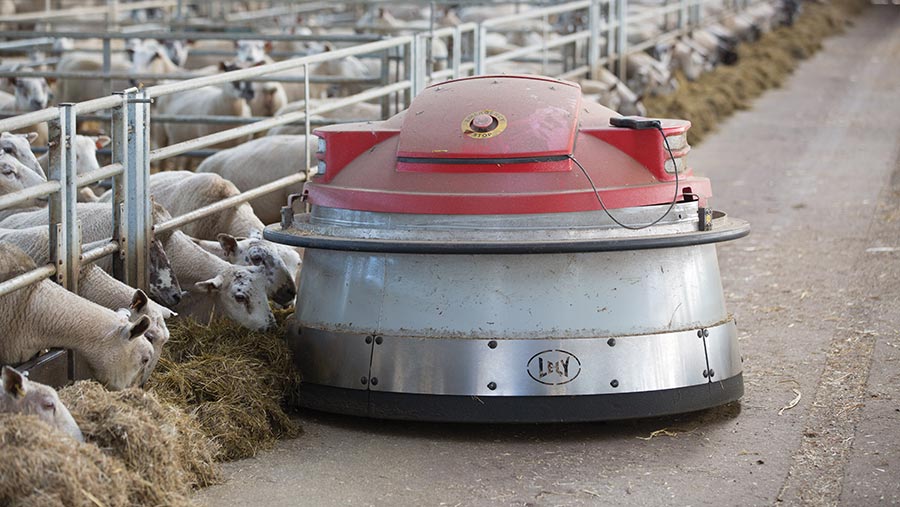Opinion: Agritech is part of the solution when it comes to sustainable farming
 © Tim Scrivener
© Tim Scrivener Fernando Auat Cheein is associate professor in robotics and autonomous systems at the National Robotarium at Heriot-Watt University. Here, he argues that utilising advanced technology in agriculture can help deliver the sustainable products consumers want.
Food security is, arguably, the most important issue on the worldwide agenda and is bringing the agricultural sector under intense scrutiny.
As technology advances and the nature of agritech evolves to include such tools as robotics, sensors, and artificial intelligence (AI), I am increasingly aware of the dual scepticism that exists around agritech.
See also: Better governance key to make the most of farm data
Many farmers eye with suspicion the technology that was not around when they learned their trade and will likely cost them money.
Equally, British consumers are, on the whole, fairly cynical about the idea of interfering with nature and many people today opt to pay a premium for produce that is grown locally, seasonally, and without chemicals or other forms of artificial enhancement.
My work has involved developing new robots, sensors and sensing techniques that characterise the health of a crop by monitoring its levels of nitrogen and other nutrients, water, and chlorophyll.
Gathering information
One study focused on the growth of peaches in Spain, where we monitored the health of the leaves and fruit, and the growth of the plant, to support predictions around its harvest.
With current recruitment problems in the UK, robotics, alongside sensing technology, offers a useful tool to gather information, especially on large crop farms where farmers might struggle to monitor the nutrient and water levels in the soil, and potential crop diseases to accurately forecast harvest yield.
With greater predictability comes greater food security, and this doesn’t have to be at the expense of natural farming methods.
Through the development of agritech techniques that collect and model data, farmers are empowered to make the best decisions they can for their crops. Agritech provides the data; farmers make the decisions.
Combining sensors and robots on a large crop farm, growers can precisely adapt to the needs of the crops at a given time. With robotics you can, for example, inspect a crop stem by stem, to determine if it is affected by a specific disease and how to treat it.
Microcharacterisation
Obtaining and using data such as this is known as microcharacterisation. This facilitates much better resource management rather than adopting a one-size-fits-all policy.
So, instead of using a particular herbicide on the entire crop, you might be able to simply treat small areas of the crop that are affected, saving money and potentially retaining organic or natural designation for most of the crop.
Finally, it is worth outlining that our research has found ways of making these harvest prediction techniques much cheaper than you would initially think.
Looking at measurements relevant to growth and health of a crop, data scientists can accurately predict many other measurements, making the expensive equipment previously required to do this unnecessary.
As a result, forecasting future crop health and behaviour, and harvest yield, is reducing in cost all the time and is a useful ally in securing the food supply of the future.
Consumer voice
There is an increasing consumer voice against industrially grown crops and a burgeoning market for organic, natural produce.
However, I am certain that, far from meddling with nature, growers that adopt sensing technology and robotic processes will be empowered to steer away from the very industrial processes being rejected by the public.
Instead, they can produce naturally grown food, commanding a premium price and maintaining the supply of crops that meet consumer demands, as a result of better decision making based on accurate data and improved predictability, all while we navigate the ongoing challenges of the sector.
